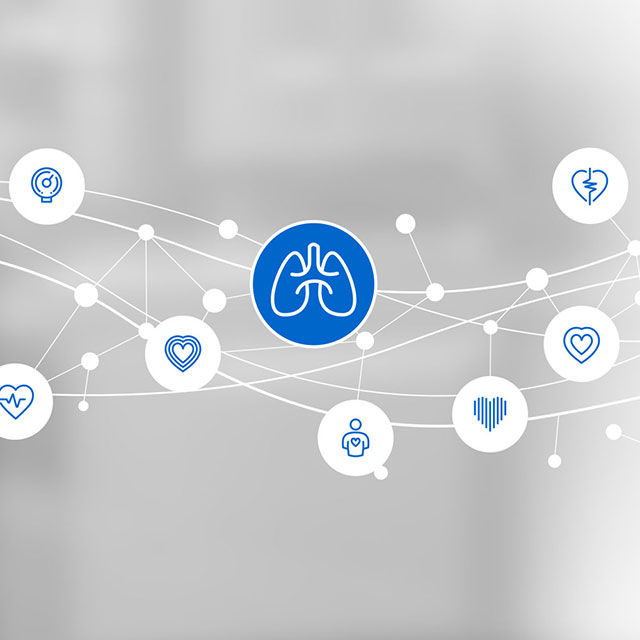Chronic Obstructive Pulmonary Disease (COPD)
Navigate the Cardiovascular Implications of COPD
16M
In the United States, COPD affects nearly 16 million adults, and many more do not know they have it.1
The Connection Between Arterial Stiffening and COPD

Arterial Stiffness and COPD
Arterial stiffness in COPD patients worsens cardiovascular issues and decreases oxygen delivery, thereby increasing the disease's complications. This condition, fueled by chronic inflammation, increases the heart's workload and risks of heart failure, leading to more frequent exacerbations and higher mortality. Effective management of arterial stiffness is essential for improving COPD treatment outcomes.
Power of Vascular Biomarkers

Utility of Vascular Biomarkers in COPD
Vascular Biomarkers Explained
Incorporate Vascular Biomarkers in the Management of COPD

In-Clinic
- Enhance cardiovascular risk stratification and personalize management plans for COPD patients.
- Tailor and adjust treatment strategies to improve health outcomes.
- Reimbursable with CPT 93050.

At Home
- Empower patients to actively manage their health by tracking changes in their biomarkers.
- Integration with telemedicine enables ongoing patient-provider interaction and enhances personalized care.
- Reimbursable with CPT 9945x & 99091.

SphygmoCor® XCEL
Capture comprehensive central hemodynamics and arterial stiffness insights at point-of-care and in clinical trials.

CONNEQT Pulse
Monitor arterial health insights with ease at home and on-the-go.

Oscar 2
Gold standard in 24-hour central hemodynamics and ambulatory blood pressure monitoring (ABPM).
1 Source - What is COPD


